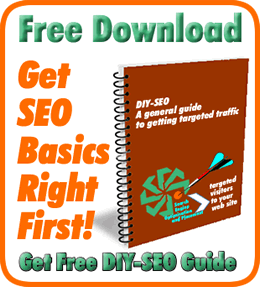How the description tag can improve clickthrough and conversion
 In a previous blog post regarding the description tag for search marketing, even although Google no longer (or ever did) use it in their search algorithm, it was suggested that it was still important enough to take time crafting it effectively.
In a previous blog post regarding the description tag for search marketing, even although Google no longer (or ever did) use it in their search algorithm, it was suggested that it was still important enough to take time crafting it effectively.
Matt Cutts, head of Google’s Webspam team, did confirm that it is still used, and displayed below the page title in search page results, when relevant to the search terms entered.
So, how can it be used effectively to help increase clickthrough rates?
The previous post ended saying that, “Taken together, a clear and concise page title and your preferred page description, might just be the combination to get that all important first clickthrough! So, as the bottom line – Don’t throw out the description tag with the bathwater just yet!”.
We should never be too pig-headed to believe we know it all and as an example the following demonstrates that possibility.
Reading an eBook by Karen Thackston, recently, she highlighted and confirmed the above statement regarding the description tag and its contribution to both search and search marketing.
Description tag can be used more creatively
She pointed out that although only about 165 characters may be used by in the Google snippet there was the opportunity of utilising the description tag more effectively.
Most companies have more than one product or service and on most website home pages there is generally more than one keyword group being promoted.
Is there a limit for the description?
The 155 character limit is the maximum displayed but not the maximum allowed and that could be utilised in the search process.
She said, “Here’s a clever little trick my friend Jill Whalen of High Rankings taught me. Remember when I said the description tag could be as long as you want? It can. And, unlike the title tag, Google will read and extract bits and pieces of the description tag to use on the SERPs.
What Jill does is create one sentence for each keyphrase the page is optimised for. She loads them into the description tag and lets Google pull the one they feel is most relevant.
This has been tested on up to 200 words (not characters, words) and works wonderfully”.
Tested and confirmed!
So, a little test was needed and the theory does indeed work wonderfully.
Using client site, Pebbles Jewellery as in previous post, the home page description tag was modified to include 4 separate product type descriptions, totaling 90 words (592 characters), covering the main product groups:-
- Wedding Rings / Eternity Rings (search returns home page)
- Designer Engagement Rings (search returns home page)
- Civil Partnership Rings (search returns info page)
- Handmade Leather Bags (search returns category pages)
The screen images below show that for 2 of the main product ranges, on home page, a search displays the full text extracted from the description tag.
The third and fourth keyword phrases, return category and info pages both of which contain their own exact entered page description. Although there is specific content in the home page tag for the phrase the results return these pages as they are a more relevant fit.
Search for:-

Search for:-

Search for:-

Identifying what is the most commonly used search keyword phrases used by potential customers and creating relevant and matching titles and descriptions can only increase the probability that your returned search result will get that all-important first click.
However, it doesn’t just end there. As seen by the above, category pages and then product pages need the same attention.
